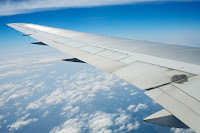TRAVEL - Motion sickness, thrombosis risk by plane or "jet lag" which slams: overview of the inconvenience of swallowing kilometers in the air, on the asphalt or over water.
Step indispensable to deserve the turquoise sea or the fresh mountain air: the trip. Although an integral part of the holidays, it can also seriously tarnish. Our tips for better support.
Motion sickness. Forcing his eyes to calm the conflict
After a series of turns or rough seas, here he is invited in the passenger compartment of the car or on the boat. Motion sickness, if Benin in itself, is not less violent and unpleasant for the person who suffers. It usually causes discomfort and nausea, sometimes vomiting. Children over 2? Years, pregnant women under hormonal treatment and migraine sufferers are the first victims. The origin of the phenomenon? "Discordant signals reaching the brain, from the three neurosensory systems that are the vestibular system of the inner ear (responsible for balance), the visual system (which makes us perceive the environment) and the somatosensory system (various sensors of the body, for example in the joints, which allow to be located in space), "says Dr. Laurence Rochat, a specialist in travel medicine at the Medical Policlinic University of Lausanne. For example, during a drive to the inner ear and the sensory receptors, the individual is in motion. But for the eyes, riveted to the inside of the passenger compartment, it is stationary. The brain reacts by nausea these conflicting information. To dispel the conflict of information, the best is to use your eyes. "As much as possible, try to set a point on the horizon to allow the visual system to confirm the movement," suggests the expert. Other tips: eat a meal before departure and, above all, absolutely avoid setting a point down (book in her lap, for example). Finally, a miracle cure, although difficult to control: sleep! In extreme cases, antihistamine therapy can be used.
Thrombosis plane. The movement primarily
The phenomenon affects 0.1% of the population, but "four times for travel (especially by plane) over eight hours," says Dr.? Laurence Rochat. If this vascular incident is rare, it can be fatal if it is not supported in time. "Thrombosis discussed during a plane journey is a deep vein thrombosis, said Dr. Gabriel Alcoba, clinical tropical medicine and travel to the University Hospitals of Geneva (HUG). A clot forms in a vein deep in the leg with a major risk that it goes back to the lung and causes a potentially fatal embolism. The risk remains high for several weeks after the trip. "How to prevent such a danger? "By moving! advises the specialist. Take a few steps every hour, multiply the exercises by moving the feet and ankles, wearing stockings, drink lots of water and avoid alcohol or sugary drinks, which dehydrate. Finally, it is important to know if one is predisposed to this problem or not. "What are the risk profiles? Pregnant women or under contraceptive pill. Smokers, overweight people, aged over 60? Years, or having a history of thrombosis. People who have known bleeding disorders or risks related to particular circumstances (leg immobilized by a splint, for example). "If you walk into one of these categories and that we consider air travel should be consulted. Medical treatment with anticoagulant base is sometimes useful, "said Dr. Alcoba. He added: "Contrary to popular belief, taking aspirin is not effective for this problem." Beyond prevention, any redness or pain localized on one leg during or after the trip, or violent oppression in the chest must be an emergency medical consultation to confirm doubt and resorb the clot quickly.
Fear of flying. Beware of explosive cocktails
"As much as possible, a person panicked at the idea of flying does not take it, said Dr. Riaz Khan, a psychiatrist at the HUG. This is an avoidance behavior that is found in all specific phobias. "Except that from rowing in Brazil or Australia is not easy ... So often that the phobic of airplane is forced to confront the object of anxiety, because it is indeed that. "In Switzerland, 14% estimated risk of suffering a once in a lifetime anxiety disorder. In the case of specific phobias, this prevalence is 6.8%, "explains the specialist. As with any anxiety disorder, the risk is great to use substances like anxiolytics or alcohol, or both, to calm down. "But the combination of these products can lead to complications and risk of medium or long-term dependency, alert Dr. Khan. The calming effect of these substances fades very quickly, which sometimes leads the phobic person to multiply the catch. But the abuse of tranquilizers and alcohol can cause a paradoxical reaction: the discomfort is increased tenfold, the person is agitated and uninhibited. "
How to do it, then, to subdue the panic related to an upcoming trip? "Pharmacological treatment with antidepressants is often effective. It is best to pair it with exposure therapy for the cause of the phobia, as well as cognitive behavioral therapy. The objective is to gradually face the anxiety-producing situation and, in parallel, to remove the anguish associated with a particular object, the airplane. "
